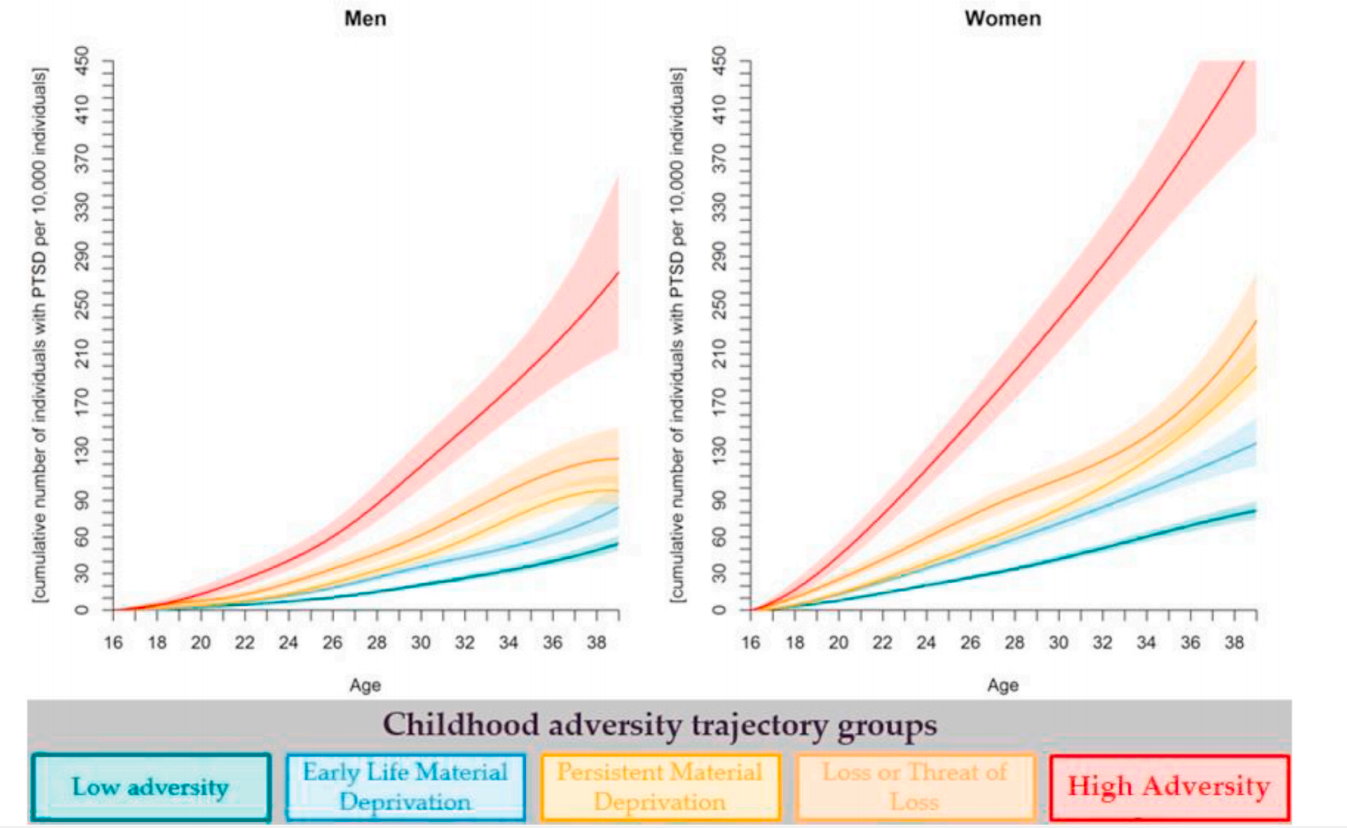Post-traumatic stress disorder (PTSD)
We used the DANLIFE cohort to examine the association between trajectories of childhood adversity and post-traumatic stress disorder (PTSD). The trajectories were previously defined into five groups: low adversity; early-life material deprivation; persistent material deprivation; loss or threat of loss; and high adversity.
Compared to the low-adversity group, children exposed to adversity were more likely to be diagnosed with PTSD in early adulthood. The adjusted hazard ratio for PTSD varied from 1.4 (95% CI: 1.3–1.5) in the early-life material deprivation group to 3.7 (3.3–4.1) in the high-adversity group, which corresponds to 8.3 extra cases of PTSD per 10,000 person-years. The relative associations were comparable in men and women, but approximately twice as many women than men were affected. The highest burden was amongst women in the high-adversity group.

